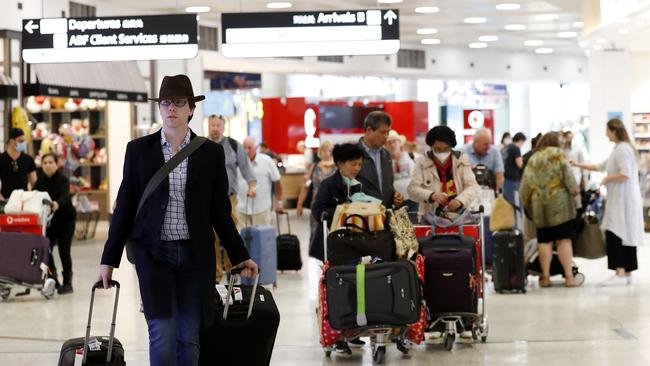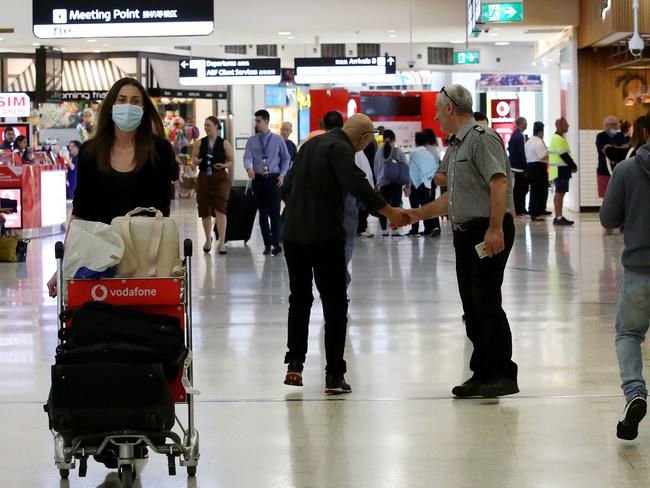Mass exodus: Tourists, temporary workers, students leave Australia amid coronavirus pandemic
More than half a million people are expected to leave Australia by the end of the year, sparking concerns of widespread economic damage.

Coronavirus
Don't miss out on the headlines from Coronavirus. Followed categories will be added to My News.
More than half a billion people will flee Australia by the end of 2020, sparking the biggest population decline in history and fears of a consumer spending slump.
More than 300,000 tourists, temporary workers and students have already left the country in the first three months of the year.
And research obtained by The Australian predicts a further 300,000 people could leave to return home by the end of the year, which economists say could further erode consumer demand and cause a slump in the rental and housing markets.
“We could be on the verge of the biggest percentage and absolute decline in our population since 1788, more than during the Great Depression or when we sent troops to the Somme,” former senior Immigration Department official Abul Rizvi said.

If Australia’s net migration drops dramatically it will have a big negative impact on an economy already damaged by the virus lockdown, says Warren Hogan, a professor of economics at UTS Business School.
“And when you look at it in turnaround terms, the drop is even bigger,” Professor Hogan said.
Reserve Bank research carried out last year by Peter Tulip and Trent Saunders found a reduction in population growth would increase rental vacancies, trim rents and housing prices, and reduce construction.
Grattan Institute chief executive John Daley said weaker population growth would focus attention on the recent period of weak growth per capita.
“Per capita recessions will become real technical recessions,” Mr Daley said. “Total growth matters to Woolworths and Westpac and other businesses whose profits depend on population, but it doesn’t help the local gym instructor.”

Acting Immigration Minister Alan Tudge said tourists fled the country as governments began to close borders to curb the spread of the coronavirus.
“We will almost certainly have fewer temporary migrants by year end as few are coming in while many are returning home as their visas expire or their work dries up,” Mr Tudge said.
Mr Rizvi said two decades of high temporary immigration had come to a “shattering halt”.
“If you look at the 1990s recession and 1980s recession, and after the Great Depression, two things stand out: net migration fell like a stone, and fertility fell,” he said. Mr Rizvi urged the government to provide greater support to the estimated 150,000 remaining foreign workers, who he said risked being left “destitute” without jobs in Australia.

“We won’t be able to run a ‘Where the bloody hell are you campaign’ ever again if we told everyone to piss off,” he said.
“The last time we grew out of a big debt, after the war, we had a baby boom and post-war migration surge; neither are likely this time.”
Mr Tudge said this month it was “time to go home” for temporary visa holders who couldn’t support themselves. In a bid to contain costs, the government’s $130bn JobKeeper wage-subsidy scheme was limited to permanent residents. Labor had tried to include an extra 1.1 million casuals.

